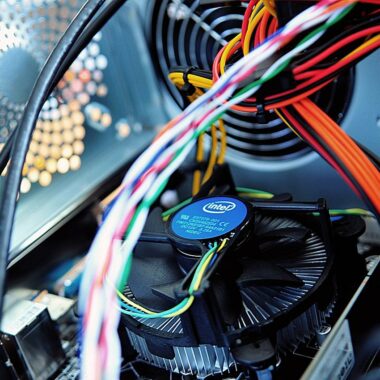Flexibility: FPGAs can be reprogrammed to perform different functions and adapt to changing requirements, making them highly versatile and useful in a wide range of applications.
Customization: FPGAs can be configured to perform specific logic functions and connect the logic blocks together in different ways, which allows the creation of custom digital circuits for specific applications.
High performance: FPGAs can be used to implement complex digital circuits with very high speed and low power consumption, which makes them ideal for use in applications where power consumption and performance are critical.
Low power consumption: FPGAs consume less power compared to Application-Specific Integrated Circuits (ASICs), which makes them suitable for use in portable and battery-powered devices.
Cost-effectiveness: FPGAs offer a cost-effective solution for small production runs, as they can be reprogrammed for multiple designs instead of creating new ASICs.
Rapid prototyping: FPGAs can be used for rapid prototyping and testing of digital circuits, allowing for faster development and deployment.
Scalability: FPGAs can be easily scaled up or down to meet the needs of a particular application, making them highly adaptable.
High-density integration: FPGAs can integrate a large number of logic gates and other components in a small physical area, making them suitable for use in space-constrained applications.
Studies about FPGA technology
There have been numerous scientific studies on FPGA technology and its applications. Here are a few examples:
- “FPGA-Based Acceleration of Convolutional Neural Networks” by J. Park et al., published in the IEEE Transactions on Computers, provides an overview of the use of FPGAs for accelerating the training and inference of convolutional neural networks (CNNs) for image recognition.
- “FPGA Implementation of a High-Performance Multiplier-Accumulator for Signal Processing Applications” by M. K. Kuo et al., published in the IEEE Transactions on Very Large Scale Integration Systems, describes the use of FPGAs for high-performance signal processing applications, such as audio and video signal processing.
- “FPGA-Based Real-Time Image Processing Platform for Traffic Surveillance” by X. Zhang et al., published in the IEEE Transactions on Industrial Informatics, describes the use of FPGAs for real-time image processing in traffic surveillance systems.
- “FPGA-Based High-Speed Cryptographic Processing” by X. Li et al., published in the IEEE Transactions on Dependable and Secure Computing, describes the use of FPGAs for high-speed cryptographic processing, such as encryption and decryption.
- “FPGA-Based Systems for Real-Time Control and Monitoring of Power Distribution Networks” by R. D. Souza et al., published in the IEEE Transactions on Industrial Informatics, describes the use of FPGAs for real-time control and monitoring of power distribution networks.
These studies demonstrate the wide range of applications in which FPGA technology can be used and its potential to improve the performance and efficiency of electronic systems.











